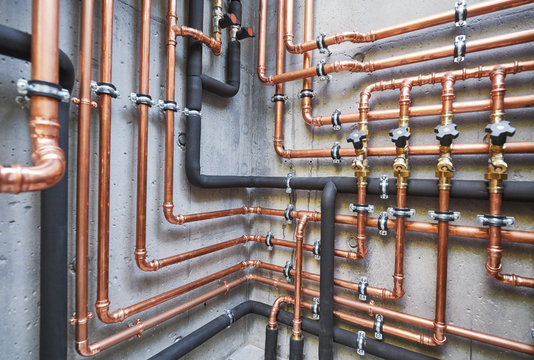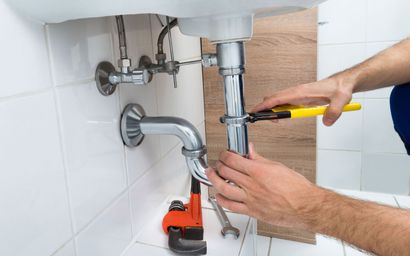A Closer Look at The Layout of Your House's Plumbing System
A Closer Look at The Layout of Your House's Plumbing System
Blog Article
Every person seems to have their unique opinion when it comes to Anatomy of a House: Understanding the Components.

Recognizing exactly how your home's pipes system works is vital for each property owner. From providing clean water for drinking, food preparation, and bathing to safely removing wastewater, a well-kept plumbing system is important for your household's health and wellness and convenience. In this thorough overview, we'll explore the intricate network that composes your home's pipes and offer tips on maintenance, upgrades, and handling typical problems.
Intro
Your home's plumbing system is more than simply a network of pipelines; it's a complicated system that ensures you have access to tidy water and reliable wastewater removal. Knowing its parts and exactly how they collaborate can aid you prevent pricey fixings and ensure whatever runs efficiently.
Standard Components of a Plumbing System
Pipes and Tubes
At the heart of your pipes system are the pipes and tubes that lug water throughout your home. These can be made from numerous products such as copper, PVC, or PEX, each with its benefits in terms of sturdiness and cost-effectiveness.
Components: Sinks, Toilets, Showers, etc.
Fixtures like sinks, bathrooms, showers, and bath tubs are where water is used in your home. Understanding exactly how these components connect to the plumbing system assists in detecting troubles and preparing upgrades.
Shutoffs and Shut-off Factors
Shutoffs regulate the circulation of water in your plumbing system. Shut-off shutoffs are essential during emergency situations or when you require to make repairs, allowing you to isolate parts of the system without interrupting water circulation to the whole residence.
Water Supply System
Key Water Line
The main water line connects your home to the community supply of water or a personal well. It's where water enters your home and is dispersed to various fixtures.
Water Meter and Stress Regulatory Authority
The water meter steps your water usage, while a stress regulatory authority guarantees that water streams at a secure stress throughout your home's pipes system, protecting against damages to pipelines and fixtures.
Cold Water vs. Hot Water Lines
Comprehending the difference in between cold water lines, which supply water directly from the primary, and warm water lines, which carry heated water from the hot water heater, assists in repairing and preparing for upgrades.
Water drainage System
Drain Pipeline and Traps
Drain pipes bring wastewater far from sinks, showers, and commodes to the sewage system or sewage-disposal tank. Catches prevent sewer gases from entering your home and likewise catch debris that might create clogs.
Air flow Pipelines
Ventilation pipelines permit air into the drain system, protecting against suction that can slow drain and create traps to empty. Correct ventilation is necessary for maintaining the integrity of your pipes system.
Importance of Proper Drainage
Guaranteeing proper drainage avoids backups and water damage. Routinely cleaning drains pipes and maintaining catches can avoid pricey repairs and extend the life of your pipes system.
Water Heating Unit
Types of Hot Water Heater
Hot water heater can be tankless or conventional tank-style. Tankless heaters warm water on demand, while storage tanks store warmed water for prompt use.
Updating Your Plumbing System
Reasons for Updating
Upgrading to water-efficient components or changing old pipes can enhance water top quality, decrease water costs, and enhance the worth of your home.
Modern Plumbing Technologies and Their Benefits
Check out modern technologies like wise leak detectors, water-saving bathrooms, and energy-efficient hot water heater that can save cash and lower ecological impact.
Cost Considerations and ROI
Compute the ahead of time prices versus long-term savings when thinking about pipes upgrades. Several upgrades spend for themselves via minimized energy expenses and less fixings.
Just How Water Heaters Attach to the Pipes System
Comprehending how water heaters attach to both the cold water supply and warm water circulation lines assists in diagnosing problems like insufficient hot water or leakages.
Upkeep Tips for Water Heaters
On a regular basis flushing your hot water heater to eliminate sediment, examining the temperature level settings, and examining for leaks can expand its life expectancy and enhance energy performance.
Usual Plumbing Concerns
Leakages and Their Causes
Leakages can occur due to maturing pipes, loosened installations, or high water pressure. Addressing leakages without delay stops water damage and mold development.
Obstructions and Obstructions
Clogs in drains pipes and bathrooms are usually caused by flushing non-flushable things or a buildup of grease and hair. Making use of drainpipe screens and being mindful of what goes down your drains can protect against clogs.
Signs of Pipes Issues to Watch For
Low water stress, slow drains, foul odors, or abnormally high water expenses are signs of possible plumbing issues that should be attended to promptly.
Plumbing Maintenance Tips
Regular Inspections and Checks
Set up annual plumbing assessments to catch problems early. Seek signs of leaks, corrosion, or mineral accumulation in taps and showerheads.
Do It Yourself Upkeep Tasks
Basic jobs like cleansing tap aerators, looking for bathroom leaks utilizing dye tablet computers, or shielding revealed pipelines in chilly climates can stop major plumbing issues.
When to Call a Professional Plumbing Technician
Know when a pipes problem needs expert expertise. Trying intricate fixings without correct expertise can cause even more damage and greater fixing costs.
Tips for Lowering Water Usage
Easy practices like repairing leaks promptly, taking much shorter showers, and running complete lots of laundry and dishes can save water and lower your utility costs.
Eco-Friendly Plumbing Options
Consider lasting pipes materials like bamboo for floor covering, which is durable and environment-friendly, or recycled glass for counter tops.
Emergency situation Readiness
Actions to Take During a Pipes Emergency situation
Know where your shut-off valves lie and how to switch off the water system in case of a burst pipe or major leak.
Significance of Having Emergency Contacts Handy
Keep get in touch with details for neighborhood plumbings or emergency situation solutions easily available for quick reaction throughout a pipes crisis.
Ecological Impact and Preservation
Water-Saving Fixtures and Appliances
Setting up low-flow faucets, showerheads, and commodes can significantly lower water usage without sacrificing efficiency.
Do It Yourself Emergency Fixes (When Relevant).
Short-lived fixes like using duct tape to patch a dripping pipe or placing a bucket under a dripping tap can minimize damages until an expert plumbing technician gets here.
Verdict.
Understanding the makeup of your home's plumbing system equips you to keep it effectively, conserving money and time on fixings. By adhering to normal upkeep regimens and remaining educated about modern plumbing innovations, you can ensure your plumbing system runs successfully for several years ahead.
Understanding Your Home Plumbing System: A Comprehensive Guide
Plumbing System: The Lifeline of Your Home
At its core, the plumbing system is designed to perform two primary functions: bring fresh water into your home and remove wastewater. The system is a network of pipes, fixtures, and other components that transport water and sewage. Residential plumbing systems include potable water supply lines, drain-waste-vent (DWV) systems, and various plumbing fixtures that make water use in daily tasks possible.
Key Components:
Water Supply: This part of your plumbing system brings municipal water into your home, passing through the main water supply line. It s responsible for supplying all water needs, from drinking to bathing.
Drainage System: It carries waste and water away from your home to the sewer or septic system. This system includes all the piping within your home that leads to external sewage or septic systems.
Vent System: An essential yet often overlooked component, the vent system allows sewer gases to escape and lets air into the drainpipes, ensuring water and waste move correctly through the system.
Fixture: More Than Just Taps and Toilets
Plumbing fixtures are the most interactive parts of the plumbing system, including faucets, showers, toilets, and sinks. Each fixture is connected to the plumbing system and plays a role in either the delivery of freshwater or the disposal of waste and wastewater.
Types of Fixtures:
Faucets and Sinks: Used for washing hands, dishes, and other daily water needs. Toilets: Dispose of human waste through the sewage system. Bathtubs and Showers: Provide bathing facilities, requiring both hot and cold water supply. Water Supply: The Source of Life
The water supply system is a critical component, ensuring that potable water is available throughout your home for various uses, including drinking, cooking, and cleaning. This system consists of pipes that distribute water to different parts of the house, controlled by valves to regulate the water flow.
Types of Plumbing: Materials and Methods
Various types of plumbing systems and materials are used in residential settings, each with its advantages and applications. From copper and PVC pipes for water supply to cast iron and ABS for drainage, the choice of materials can impact the longevity and efficiency of your plumbing system.
https://intownplumbingtx.com/articles/home-plumbing-system-guide/

We were brought to that report on Understanding Your Home's Plumbing Anatomy through a friend on another web address. Do you know about anybody else who is intrigued by The Inner Workings of Your Home's Plumbing? Please feel free to promote it. We truly appreciate reading our article about Anatomy of a House: Understanding the Components.
Contact Us Report this page